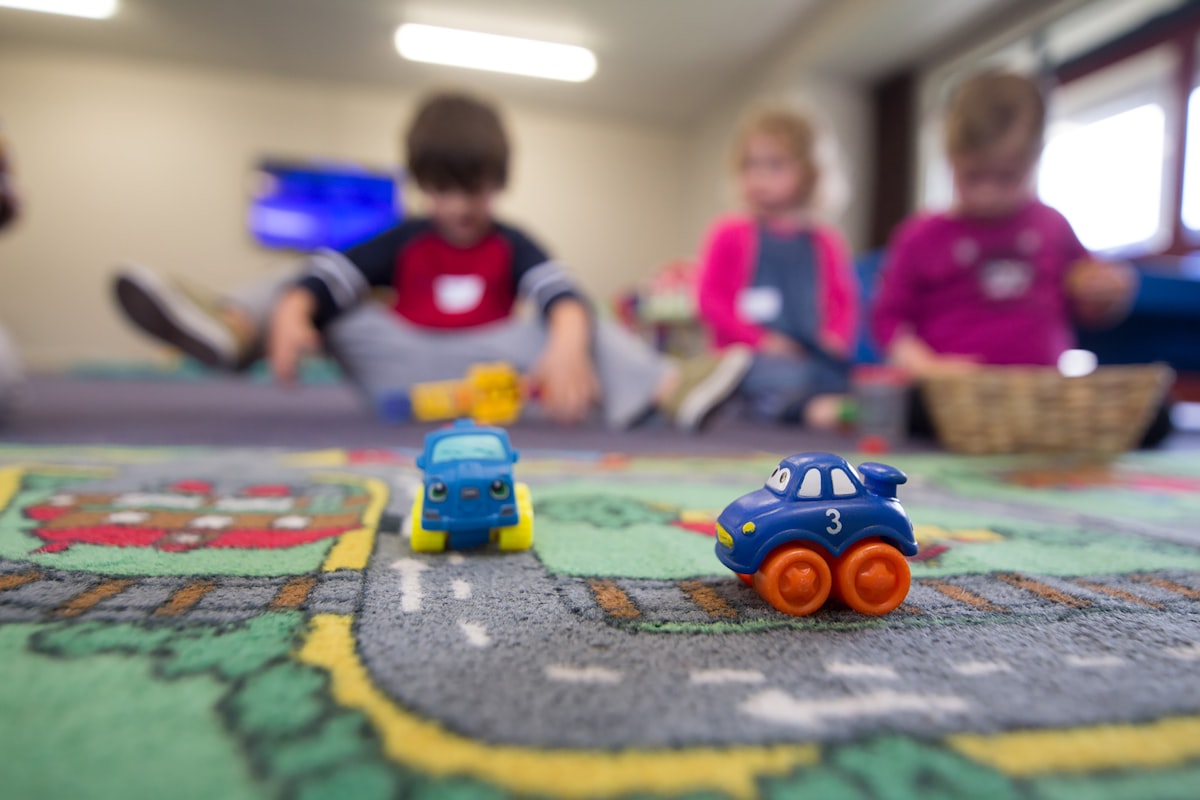Vocal Warm-ups for Kindergarten

It's hard to stay consistent with vocal warm-ups as an adult, let alone a kindergartener. Although important, some warm-ups can be boring and monotonous. But teaching a kindergartener to warm up their voice is not as hard as it seems and it certainly doesn't have to be boring. In this article, you will find a number of fun singing games that will help to warm up any kindergartener's voice.
Vocal warm-ups for kindergarten should be play-focussed. Funny sounds, such as yawns, puppy whimpers, sirens and lip trills will help improve range, while singing through fun phrases will help with their pitch. Breath control can be improved through 'sh' competitions and multiple karate 'ha!'s.
You can learn how to do each of these warm-ups below. It is also important to note that kindergarteners have a different vocal range to adults. This will allow you to further tailor the warm-ups to their age.
Vocal Warm-ups for Kindergarten
The secret to getting children excited about a relatively mundane task is to turn it into a game. If I told my little boy to clean up his toys, there would be resistance. But it's a different story if it becomes a game of how many toys he can pack away in 60 seconds.
The same applies for vocal warmups. Games and props make vocal warmups fun for young children. These will prevent the children from becoming bored and losing focus. Once a child loses focus, it's hard to get it back.
Before I begin talking about warmups, it's important to note that a child's vocal range is different to an adults. You can find the six standard vocal ranges for adults here.
A kindergartener's vocal range usually sits between Middle C (C4) and the C above (C5). But keep in mind that kindergarten children vary in age. Younger children may not be able to sing a C4 or go as high as C5. However, staying within this octave will capture each child's vocal range.
Therefore, any of the following warm-ups that require children to match your pitch should be kept within the range of C4-C5.
Warm-ups to Improve Vocal Range
Fun sounds are a great way to improve a child's vocal range. For kindergarten kids, using props is an easy way to turn these sounds into a game.
Use the following props for each warmup sound. When you hold the corresponding prop in the air, the kids have to make that sound until you hold the next one up. Hiding the other props behind you will add to the suspense of which prop comes next.
- Pillow: Big yawns
- Firetruck: Sirens
- Puppy Dog: High-pitched whimpers
- Car: Lip trills
Yawns
Yawning stretches the vocal cords in the lower end of our vocal range, provided you slide your pitch down when you yawn. Teach the children to over-exaggerate their yawns and stretch their arms up as they do.
Sirens
Sirens smooth and improve your vocal range, but are also fun, even for adults. Keep the siren within the children's vocal range when you demonstrate, using an 'oo' sound. Make sure to demonstrate the correct siren sound for the best warm-up, which involves sliding your pitch from low to high and then back down again.
Puppy Dog Whimpers
Whimpers are another way to strengthen the upper limits of your vocal range, and use a gentle 'ng' or 'm' sound. If there's one thing most children like, it's puppies. So seeing a toy puppy and imitating it is always a winner.
Lip Trills
Lip trills are the sound you make when you blow raspberries with your lips or imitate a car engine. This is why most children should be able to copy the sound of a car if you demonstrate. Sliding your pitch higher will get the most out of the exercise, so using a little car prop will help the kids remember to use a high-pitch sound. You can learn how to do a lip trill here.
Warmups to Encourage Breath Control
Breath control is another important aspect of singing. If you can train children to use their diaphragm when they sing, this should come naturally when they sing as an adult.
The 'Shhhh' Competition
The 'Shhhh' game involves all the children holding a 'sh' sound for as long as they can. Get the kids to start at the same time and get them to sit down when the run out of breath. The last one standing is the winner. Make sure to play a few rounds so the kids do it more than once.
Karate Time!
Strong laughing, or a 'ha' sound, will exercise your diaphragm. This is because it involves a forceful breath out, followed by a very sudden stop. One 'ha' sound that most children can identify with is a karate chop. Make a short routine (two air kicks and two air punches), where the kids make a 'ha!' sound each time.
As a fun addition, you can also add a karate chop and 'heeya!' at the end of the routine. This adds a little bit of nasal tone into the warm-up as well.
Warm-ups to Improve Pitch
The following warm-ups will improve a child's pitch recognition and imitation. These warm-ups are best left until last because they involve more singing
Chromatic Scale
The chromatic scale (one octave) is sung to the words 'I shall sing my half notes every day until they're perfect'. Each syllable should be higher in pitch than the last, but only by a half-step (semitone). You can find examples of a chromatic scale here. For kindergarten, it is best to sing from C4 to C5.
Monotone Tongue Twister
Another good thing to teach kids is holding the same pitch. This can be done by chanting the fun tongue twister: 'my mother makes me mash my mini M&Ms on a Monday morning'. These words should be sung, staying on the same pitch. You can then repeat the phrase using a different pitch. For example, C4, then E4 and then G4.
Copy the Vowel and Pitch
Most kids love a game of copy-cat. Pick a pitch and vowel sound to sing to the children and have them copy. You can do this as a group or target individuals. As an example, you could sing E4 to an 'ah' sound, and then move onto A4 with an 'oo' sound.
